Styrofoam crafting opens the door to imaginative creations, yet it can sometimes be tricky to pick the right glue among the many kinds of adhesive available. It is a fact that glues vary a lot, and an inappropriate one can not only mess up your work but also ruin it completely. Whether the projects are for school, DIY crafts, or elaborate decorating, knowing the appropriate Styrofoam adhesives is a prerequisite for getting clean, strong, and professional results. In this article, we will discuss the best adhesive options for Styrofoam, their pros and cons, and give tips for picking the right glue based on your needs. So, get ready to elevate your Styrofoam crafting experience!
Understanding Styrofoam and Adhesives
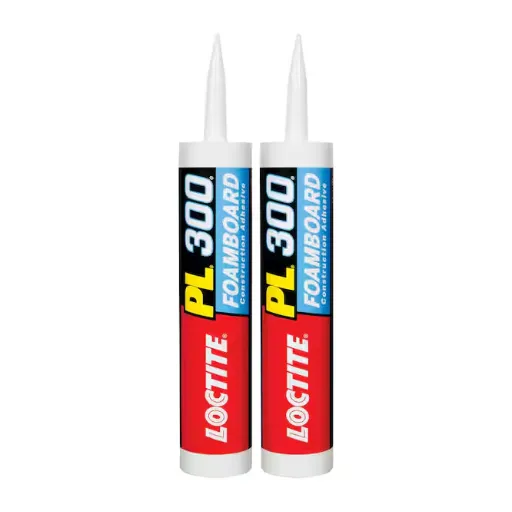
Styrofoam, which is one of the types of expanded polystyrene foam, is a very lightweight material with many porous pores. It is extensively used in crafting, packaging, and insulation applications. Nevertheless, some adhesives can easily ruin its fragile structure. It is essential to choose a glue that is compatible with the material composition of Styrofoam. Water-based glues like white glue or tacky glue are suitable for making basic crafts and are safe and effective. For making stronger connections, it is best to use specialty adhesives such as foam-safe spray adhesives or silicone-based glues, which are also great. Solvent-based glues should be avoided since they can dissolve or damage the Styrofoam. It is advisable first to perform a small area test with the adhesive to check for compatibility and achieve the expected results.
What is Styrofoam?
Styrofoam is a registered trademark of The Dow Chemical Company and refers to a particular kind of expanded polystyrene foam (EPS) that the company produces. The material in question is very light and can be easily shaped; it is composed of approximately 95% air and 5% polystyrene. Styrofoam is an excellent insulator, making it the primary material used for building insulation, packaging, and crafts. Even though it is often called generically, not every product made from polystyrene foam is considered Styrofoam. The recycling practices and initiatives aimed at finding more eco-friendly substitutes have identified Styrofoam as the main culprit because it doesn’t decay naturally and has a highly negative impact on the environment.
Challenges of Gluing Styrofoam
The process of gluing Styrofoam is intricate due to its fragile and porous nature. The commonly used adhesives, especially those with solvents, can dissolve or ruin Styrofoam, thus weakening the latter’s structure. Besides, the low density of the material makes it hard to form a strong bond, especially in situations where the bond must remain strong, be prone to stress, or when durability is required. Using the correct type of adhesive, such as special foam glue or low-heat setting hot glue, is essential to secure the bond and avoid deformation. Environmental factors like temperature and humidity can also influence the performance of adhesives and the time to dry, which can be a challenge in the gluing procedure.
Types of Adhesives for Styrofoam
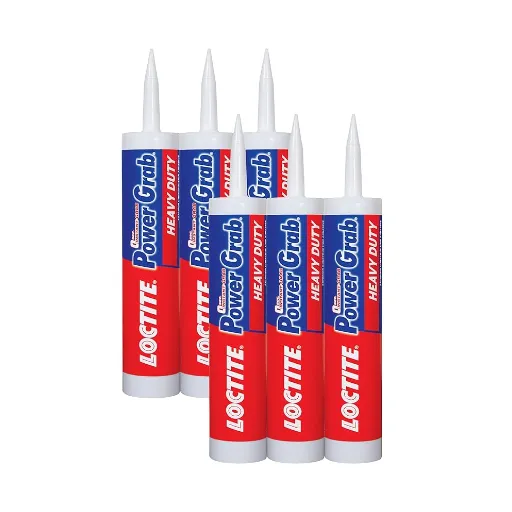
Foam-Safe Glues
Foam-safe adhesives that are specialized are specially designed for bonding Styrofoam. These glues give a firm hold without causing the material to melt or deform.
Hot Glue (Low-Temperature Setting)
When using a hot glue gun, ensure the temperature is set to low to prevent damage to the Styrofoam. This technique can be applied successfully to lightweight products.
Spray Adhesives
Offering a compatible option for Styrofoam, some spray adhesives even out the application for covering larger areas.
White Glue (PVA Glue)
Regular white glue is safe and efficient for crafting with Styrofoam projects, but it might need a longer drying time.
Silicone-Based Adhesives
Silicone adhesives provide flexibility and durable bonding, making them perfect for Styrofoam in places where the temperature fluctuates.
Overview of Adhesive Categories
In the end, the selection of an adhesive for Styrofoam comes down to the project’s specifications and the surrounding conditions. For crafting at home, white glue (PVA glue) is a good option because it is safe and easy to use, especially for indoor projects where quick drying is not a requirement. Spray adhesives are perfect for large surfaces because they provide an efficient, even, and smooth application, especially in arts or crafts where the product is meant to look attractive. Silicone-based adhesives are the best ones to use when the application needs strong adhesion and flexibility for outdoor installation or for heat-correlated changes in the environment. For industrial floors or any situation where the adhesive is constantly pulled apart or under stress, epoxy adhesives and certain foam-safe cyanoacrylate adhesives will be your best bet for providing strong and durable bonds. Each type of adhesive has its own set of pros that are mainly suited for different projects, thus granting control over how the project is executed.
Comparison Table of Adhesives
Here is a comparison table of adhesives for Styrofoam based on the latest information:
| Adhesive Type | Key Features | Best Applications | Drying Time | Strength | Special Notes |
|---|---|---|---|---|---|
| UHU Por | Flexible, strong, dries clear | Foam crafts | Moderate (10-20 min) | Strong | Limited availability in some regions |
| Foam Safe CA Glue | Fast drying, precise application | Small, intricate parts | Very fast (10-30 sec) | Strong | Can be brittle after drying |
| 3M Super 77 Spray | Quick, ample surface coverage | Multi-material bonding | Fast (1-10 min) | Moderate to strong | Requires ventilation due to fumes |
| Low-Temp Hot Glue | Quick setting, affordable | Lightweight projects | Instant | Moderate | Can melt Styrofoam if overheated |
| PVA Glue | Non-toxic, dries clear | Lightweight crafts | Slow (1-2 hours) | Moderate | Not water-resistant |
| E6000 Craft Adhesive | Waterproof, versatile | Heavy-duty crafts | Slow (1-2 hours) | Very strong | Strong fumes require ventilation |
| Aleene’s Tacky Glue | Thick, non-toxic | General crafting | Slow (1-2 hours) | Moderate | Not ideal for heavy projects |
| Beacon Hold The Foam | Instant bond, foam-specific | Large Styrofoam projects | Moderate (30-60 min) | Strong | Limited availability |
| Gorilla Glue (Foam) | Expands, waterproof | Heavy-duty, gap-filling | Slow (1-2 hours) | Very strong | Expanding property can be messy |
| Mod Podge | Adhesive and sealer | Lightweight crafts | Slow (1-2 hours) | Moderate | Not suitable for heavy-duty bonding |
Step-by-Step Guide: How to Glue Styrofoam
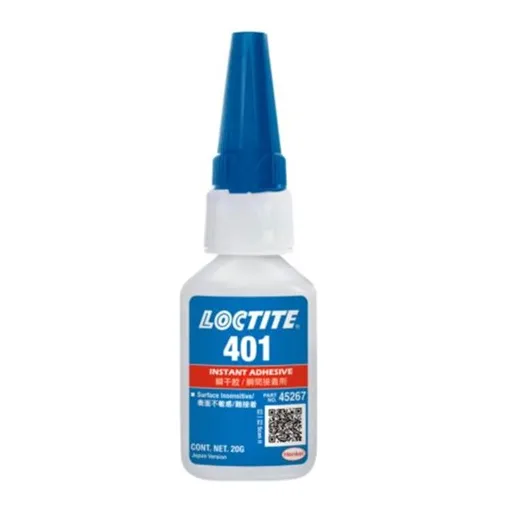
1. Choose the Right Adhesive
Choose an adhesive that is especially made for Styrofoam, such as Beacon Hold The Foam, Gorilla Glue (Foam), or any other Styrofoam-compatible alternative, as per the requirements of your project.
2. Prepare the Surfaces
Make the Styrofoam surfaces clean and dry. Help the strong bond by removing the dust and debris.
3. Apply the Adhesive
Spread a thin, flat adhesive layer on one of the surfaces. Take care when using expanding adhesives like Gorilla Glue, and avoid applying too much.
4. Join the Pieces
Carefully align the Styrofoam parts and press them together with a firm hand. To get the best results, make sure the surfaces are aligned correctly before the adhesive starts to set.
5. Secure and Wait
You can either hold the pieces in position or use clamps if necessary to ensure a strong bond. The time required for adhesive curing according to the product instructions is usually 30 minutes to several hours.
6. Finish and Clean Up
After the glue is completely set, if necessary, carefully trim or take out any extra adhesive with a craft knife or sanding tool.
Application Techniques
The process of installing adhesives requires a high level of skill and precision, which are the main factors in achieving a strong and long-lasting bond. Start by selecting the appropriate adhesive based on the materials to be used, as different adhesives are designed for various applications. Depending on the directions of the specific product, apply a uniform and thick layer of adhesive on either one or both surfaces. It is recommended to use tools like brushes, spatulas, or applicators to obtain better precision and control. To get the most out of the adhesive, make sure that all surfaces are cleaned properly and are free from dust, grease, and dirt. When these techniques are used with the right curing time and careful alignment, they significantly improve the result, ensuring a reliable and long-lasting bond.
Drying and Curing Times
The drying and curing times are the most crucial elements that determine the success of an adhesive bond. Drying time refers to the period needed for the adhesive to become completely soft and non-tacky, making it possible to handle or proceed with the assembly. The curing time, however, is the complete period needed for the adhesive to achieve its maximum bonding strength. Depending on the type of adhesive, environmental conditions such as temperature and humidity, and the materials being bonded, these times can differ widely. For instance, cyanoacrylate adhesives typically dry in seconds to minutes, whereas epoxies or polyurethane adhesives may take a few hours to cure fully. Always keep the manufacturer’s guidelines in mind to get the best results, and include the environmental factors that might impact the process.
Safety Tips and Precautions
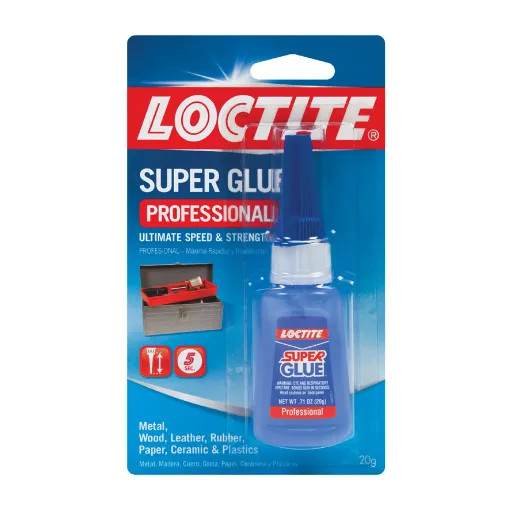
- Protect Your Skin and Eyes – Always wear gloves and safety goggles when using adhesives to prevent direct contact that might lead to irritation or injury.
- Work in a Well-Ventilated Area – Some glues exhale fumes that can be unpleasant or harmful if inhaled. Make sure there is good air circulation or wear a mask if needed.
- Keep Away from Heat and Flame – Various adhesives are likely to catch fire. Keep them at a distance from visible flames or sources of high heat and use them accordingly.
- Follow Manufacturer’s Guidelines – Always read and follow the adhesive manufacturer’s instructions to ensure safe and effective usage.
- Store Adhesives Safely – Make sure to keep adhesives out of the reach of kids and to store them in a cool, dry place to preserve their quality and safety.
- Dispose of Properly – When getting rid of adhesives or their containers, always follow local disposal regulations as improper disposal can hurt the environment.
Health and Safety Considerations
When applying adhesives, it’s crucial to acknowledge the health and safety risks that might arise and, thus, take the proper precautions. The most recent findings underscore the need for good air circulation when using adhesives. In some cases, the release of vapors that can cause respiratory irritation and, in more severe situations, even chronic conditions, is possible from the use of certain adhesive products. Always ensure the use of the proper personal protective equipment (PPE), including gloves and goggles, to keep your skin and eyes safe. Furthermore, try to use the adhesive in places with good air flow or wear special masks that can filter the chemical particles to avoid inhaling the fumes. If users follow these safety procedures, they can reduce the likelihood of health-related issues and safely use adhesives in different ways.
Avoiding Common Mistakes
Among the biggest blunders in adhesive application, one of the most common is selecting the wrong adhesive for the materials involved. Each adhesive has its unique application area, and choosing the wrong one might either weaken the bonds or cause them to fail altogether. Another common mistake is improper surface preparation before the actual application. Adhesion can easily be hampered by dust, grease, or moisture; thus, it is essential to make sure that all surfaces are clean and dry. Over-application of adhesive is also an issue, and it can result in uneven drying or a messy situation that might be hard to clean up. Finally, speeding up the curing process by not giving sufficient drying time will surely affect the bond’s strength. It is no wonder that avoiding these mistakes will guarantee greater success and durability in the adhesive work area.
Creative Applications and Use Cases
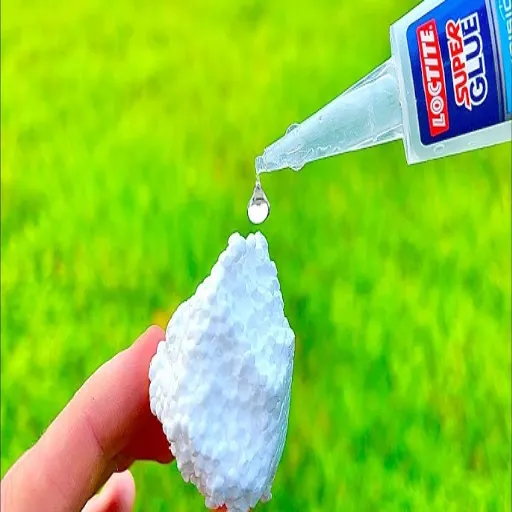
The use of adhesives is universal among various creative projects and industries, mainly because of their flexible nature. They are the primary tool in a DIY artist’s kit for beautifying an area with scrapbooking, making miniatures, or even creating jewelry by assembling materials like paper, fabric, and wood. High-strength adhesives are one of the factors that make interior design so beautiful, as they facilitate the installation of ornamental wall coverings, flooring, and even the making of customized furniture. Besides, specialized glues are an artist’s must-have for creating a mixed-media art piece, which combines various materials such as glass, metal, and ceramics. Furthermore, adhesives are also a major player in the innovations of packaging designs and, not to say, the development stage, where the testing of a product’s prototype takes place. Their use knows no boundary, thus enabling the production of durable and well-appearing items.
Crafting with Styrofoam
Styrofoam definitely ranks among the top materials on my list for making things because it is light, versatile, and easy to handle. I create decorative centerpieces and small models. Cutting and shaping Styrofoam with the right tools, like a hot wire cutter or craft knife, is relatively easy. I often paint or cover it to personalize it. Whether I am producing goods for the holidays or simply making gifts for friends, Styrofoam is there to provide me with unlimited creative options.
Practical Uses for Styrofoam
Styrofoam is efficient and is thus a very popular material outside of the artistic sphere. It is mainly used in the packaging industry, where it serves as an excellent thermal insulator and shock-proofing material, allowing it to protect fragile items during transport. Besides, the construction industry has come to rely on Styrofoam as an insulating material for walls, ceilings, and floors in areas of high moisture, as well as because of its temperature regulation. Moreover, the food services sector uses Styrofoam for takeaway containers and coffee cups, mainly due to its lightness and insulation properties. Its versatility is even translated into innovative uses like making reusable molds, constructing light buildings, or designing models for industrial design and architecture. On the other hand, with environmental issues coming to the fore, various steps are being taken to create eco-friendly alternatives and enhance the recycling process of Styrofoam to lessen its ecological footprint.
Reference Sources
Below are four scholarly and credible reference sources regarding adhesives for Styrofoam:
- “Production of adhesive from cassava starch and waste synthetic materials”
The research paper deals with adhesive properties and their usage, including the use of Styrofoam glue. - “Study on the recycling of waste Styrofoam for adhesive”
The paper is dedicated to the recycling of Styrofoam into glue, mainly focusing on the technical possibilities of the process. - “Preparation of Drosophila S2 cells for light microscopy”
The article is about a different subject, but it mentions the applications of glue within the context of Styrofoam-related experimental setups. - “S1101”
Insights into the characteristics of Styrofoam and the interaction of adhesives with it are contained in this document.
Frequently Asked Questions (FAQs)
What is the best glue for styrofoam?
The best glue for styrofoam is typically a specialized adhesive designed for foam, such as foam-tac or contact glue. These adhesives bond well without melting the foam, ensuring a strong hold for your projects.
Does super glue work on styrofoam?
Super glue is not recommended for styrofoam as it can melt the foam due to its chemical composition. Instead, opt for glue specifically formulated to bond with foam materials.
Can I use wood glue on styrofoam?
Wood glue is generally not suitable for styrofoam since it may not adhere properly and could damage the foam. It’s best to use adhesives that are designed for foam, such as craft glue or foam-tac.
How do I make styrofoam adhere together?
To make styrofoam adhere together, use a glue specifically designed for foam. Apply a generous amount of adhesive and press the pieces together firmly. Allow it to cure according to the manufacturer’s instructions for a strong bond.
What glue works well on styrofoam?
Adhesives like foam-tac, DAP, and spray adhesive work well on styrofoam. They provide a high-strength bond and are formulated to ensure that the foam does not melt during application.
Can I use a glue stick on styrofoam?
A glue stick may not provide a strong enough bond for styrofoam. It’s better to use a more robust adhesive, such as craft glue or a spray adhesive designed for foam projects.
Does contact glue melt foam?
Most contact glues are safe to use on foam as they are designed to bond without melting the material. However, always check the label to ensure it is specifically formulated for use with porous surfaces like styrofoam.
What happens if I use the wrong adhesive on styrofoam?
If you use the wrong adhesive on styrofoam, it may not adhere correctly or could potentially melt the foam, ruining your project. Always choose adhesives that are explicitly labeled for foam to ensure the best results.
Is there a spray adhesive for styrofoam?
Yes, there are spray adhesives formulated for styrofoam that offer ease of application and strong bonding capabilities. They are convenient for larger projects where precise application is less critical.



















